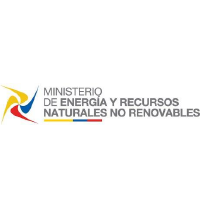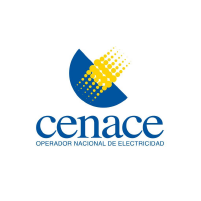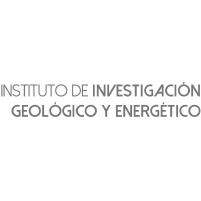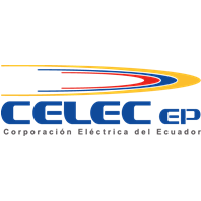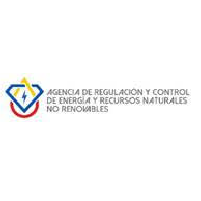Evaluación de la pre factibilidad para la generación de energía eléctrica mediante la sinergia entre las energías eólica y almacenamiento por bombeo de agua en la isla San Cristóbal - Galápagos
Pre-feasibility evaluation for the generation of electrical energy through the synergy between wind energy and water pumping storage in San Cristóbal Island - Galápagos
Cómo citar
Descargar cita
Mostrar biografía de los autores
Artículos similares
- Carlos Lozada, David Panchi, Wilson Sánchez, Andrés Jacho, Regresión Lineal para la Identificación del Punto de Máxima Potencia en Microrredes Híbridas Implementado en HYPERSIM , Revista Técnica "energía": Vol. 20 Núm. 2 (2024): Revista Técnica "energía", Edición No. 20, ISSUE II
- Wilson Sánchez, Diego Echeverría, Santiago Chamba, Andrés Jacho, Carlos Lozada, Despacho Económico de Energía de la Microrred en las Islas Galápagos Utilizando la Plataforma SimSEE , Revista Técnica "energía": Vol. 21 Núm. 1 (2024): Revista Técnica "energía", Edición No. 21, ISSUE I
- Paulo Castro, Jaime Cepeda, Análisis del Impacto de la Penetración de Energías Renovables no Gestionables en la seguridad operativa de los Sistemas Eléctricos de Potencia , Revista Técnica "energía": Vol. 22 Núm. 1 (2025): Revista Técnica "energía", Edición No. 22, ISSUE I
- Wilson Pavón, Sandra Gualotuña, Estrategia de control robusto descentralizado para una micro-red aislada con generación distribuida acoplada para mejorar la estabilidad de voltaje. , Revista Técnica "energía": Vol. 20 Núm. 2 (2024): Revista Técnica "energía", Edición No. 20, ISSUE II
- Diego Lojano, Juan Palacios, Flujo Óptimo de Sistemas Eléctricos de Potencia con Consideraciones Ambientales , Revista Técnica "energía": Vol. 21 Núm. 2 (2025): Revista Técnica "energía", Edición No. 21, ISSUE II
- Wilson Vásquez, Evaluación del Factor de Potencia en Usuarios con Equipos de Generación para Autoabastecimiento , Revista Técnica "energía": Vol. 21 Núm. 1 (2024): Revista Técnica "energía", Edición No. 21, ISSUE I
- Luis Cruz, Cristian Gallardo, Optimización de la Captación Solar mediante un Seguidor de Doble Eje Basado en Algoritmo Astronómico en una Estación Fotovoltaica de Pequeña Escala , Revista Técnica "energía": Vol. 22 Núm. 1 (2025): Revista Técnica "energía", Edición No. 22, ISSUE I
- Josue Ortiz, Jefferson Tayupanda, Carlos Quinatoa, Solución al problema de despacho hidrotérmico a corto plazo mediante la programación no lineal aplicada a sistemas de uno y varios nodos , Revista Técnica "energía": Vol. 20 Núm. 2 (2024): Revista Técnica "energía", Edición No. 20, ISSUE II
- Andrés Jacho, Diego Echeverría, Santiago Chamba, Carlos Lozada, Wilson Sánchez, Aplicación del Control Formador de Red en Microrredes con Sistemas de Almacenamiento de Energía para la Regulación Primaria de Frecuencia, Caso de Estudio: Islas Galápagos , Revista Técnica "energía": Vol. 21 Núm. 1 (2024): Revista Técnica "energía", Edición No. 21, ISSUE I
- Andrés Pereira, Roberth Saraguro, Carlos Quinatoa, Evaluación de Pérdidas de Potencia Activa en el Sistema Eléctrico de la Empresa eléctrica Quito (EEQ) Aplicando un Algoritmo de Optimización , Revista Técnica "energía": Vol. 21 Núm. 1 (2024): Revista Técnica "energía", Edición No. 21, ISSUE I
También puede Iniciar una búsqueda de similitud avanzada para este artículo.
Artículos más leídos del mismo autor/a
- Javier Martínez , Mario Bustamante , Paolo Salazar , José Macias , A. P. Lobato, Ricardo Narváez , Martin Cordovez , Caracterización Térmica y Mecánica de la Madera de Roble , Revista Técnica "energía": Vol. 16 Núm. 1 (2019): Revista Técnica "energía", Edición No. 16
- Boris German, Karolina Toapanta, Sebastián Espinoza, Ricardo Narváez, Edward Jiménez , Andrés Chico, Optimización de Centros de Almacenamiento de Jatropha Curcas en Manabí Ecuador , Revista Técnica "energía": Vol. 15 Núm. 1 (2018): Revista Técnica "energía", Edición No. 15
Este documento expone una investigación que tiene como objetivo aportar a la mitigación del cambio climático, además de buscar autonomía energética basándose en Energías Renovables. Por tal motivo esta investigación evalúa la prefactibilidad de un sistema de almacenamiento de energía renovable basado en bombeo de agua en la isla San Cristóbal - Galápagos, donde se tiene una fuente de energía almacenada debido a la diferencia de nivel disponible en la laguna El Junco. Se realizan los cálculos en base a la curva de demanda de la isla durante el año 2018, contando con que se desea cubrir el pico de dicha demanda de energía de la noche que se encuentra entre las 16h00 y las 22h00. Se calculan los tanques de almacenamiento de acuerdo al volumen requerido además de las características que deben tener los generadores de energía. Para el retorno del agua usada en la generación se calcula un sistema de bombeo en base a la energía obtenida por medio del recurso eólico de San Cristóbal, mismo que corresponde a 3 aerogeneradores de los cuales se analiza su curva de potencia, y junto con la velocidad promedio del viento por hora durante el año 2018, se obtiene la energía entregada por los aerogeneradores para realizar el bombeo requerido, además de las características de las bombas. Los resultados muestran que la propuesta es viable en vista de que se cubre la demanda del pico de la noche, considerando que la energía usada es netamente renovable.
Visitas del artículo 1351 | Visitas PDF 689
Descargas
[1] B. Dursun and B. Alboyaci, "The contribution of wind-hydro pumped storage systems in meeting Turkey's electric energy demand," Renewable and Sustainable Energy Reviews, vol. 14, pp. 1979-1988, 2010.
[2] P. R. Naskar and S. Bondyopadhyay, "Hybrid renewable energy: future of the world," in IOP Conference Series: Materials Science and Engineering, 2018, p. 012073.
[3] T. Ma, H. Yang, L. Lu, and J. Peng, "Technical feasibility study on a standalone hybrid solar-wind system with pumped hydro storage for a remote island in Hong Kong," Renewable energy, vol. 69, pp. 7-15, 2014.
[4] Y. Saad, C. Nohra, R. Younes, S. Abboudi, A. Ilinca, H. Ibrahim, et al., "Study of an optimized wind-diesel hybrid system for canadian remote sites," in Electrical Power and Energy Conference (EPEC), 2017 IEEE, 2017, pp. 1-6.
[5] M. A. Cruz, M. E. Segatto, I. Yahyaoui, A. Atieh, and H. R. Rocha, "Feasibility analysis of a wind pumped hydroelectric storage system on the Island of Brava," in Renewable Energy Congress (IREC), 2018 9th International, 2018, pp. 1-6.
[6] Y. Saad, R. Younes, S. Abboudi, and A. Ilinca, "Hydro-pneumatic storage for wind-diesel electricity generation in remote sites," Applied Energy, vol. 231, pp. 1159-1178, 2018.
[7] U. S. Energy Information Administration, U.S. Department of Energy, Sargent & Lundy, "Capital Cost and Performance Characteristic Estimates for Utility Scale Electric Power Generating Technologies," Independent Statistics & Analysis, 2020.
[8] L. Bayón, J. Grau, M. Ruiz, and P. J. E. Suárez, "A comparative economic study of two configurations of hydro-wind power plants," vol. 112, pp. 8-16, 2016.
[9] S. Phommixay, M. L. Doumbia, and D. L. St-Pierre, "Optimal economic operation strategy of wind turbine-diesel unit with pumped hydro energy storage," in Ecological Vehicles and Renewable Energies (EVER), 2018 Thirteenth International Conference on, 2018, pp. 1-6.
[10] R. Hemmati, "Optimal cogeneration and scheduling of hybrid hydro-thermal-wind-solar system incorporating energy storage systems," Journal of Renewable and Sustainable Energy, vol. 10, p. 014102, 2018.
[11] M. Bianchi, L. Branchini, N. Cavina, A. Cerofolini, E. Corti, A. De Pascale, et al., "Managing wind variability with pumped hydro storage and gas turbines," vol. 45, pp. 22-31, 2014.
[12] R. Indhumathi, E. T. R. Smiline, and V. Rajaa, "Hybrid System with Dynamic Voltage Restorer for Power Quality Improvement," Journal of Chemical and Pharmaceutical Sciences ISSN, vol. 974, p. 2115, 2017.
[13] A. G. Tsikalakis, Y. A. Katsigiannis, E. S. Karapidakis, and K. E. Fiorentzis, "Evaluating the effect of wind-hydro hybrid power stations on the operation of Cretan power system," in Universities Power Engineering Conference (UPEC), 2017 52nd International, 2017, pp. 1-6.
[14] F. Kose and M. N. Kaya, "Analysis on meeting the electric energy demand of an active plant with a wind-hydro hybrid power station in Konya, Turkey: Konya water treatment plant," Renewable energy, vol. 55, pp. 196-201, 2013.
[15] P. A. Colinvaux and E. K. Schofield, "Historical ecology in the Galapagos Islands: I. A Holocene pollen record from El Junco Lake, Isla San Cristobal," The Journal of Ecology, pp. 989-1012, 1976.
[16] C. Brumann, "Shifting tides of world-making in the UNESCO World Heritage Convention: Cosmopolitanisms colliding," Ethnic and Racial Studies, vol. 37, pp. 2176-2192, 2014.
[17] A. K. Dey, "Hybrid Hydro Renewable Energy Storage Model," in IOP Conference Series: Materials Science and Engineering, 2018, p. 012046.
[18] Á. B. Villa Caigua, "Modelos de Zonificación utilizando Información Geoespacial a través de SIG, para establecer Categorías de Manejo en función de los conflictos de la reserva hídrica y ecológica de San Cristóbal Galápagos," Quito: USFQ, 2016, 2016.
[19] M. Steinitz-Kannan, M. A. Riedinger, W. Last, M. Brenner, and M. C. Miller, "Un registro de 6 000 años de manifestaciones intensas del Fenómeno de El Niño en sedimentos de lagunas de las islas Galápagos," Bulletin de l'Institut français d'études andines, vol. 27, 1998.
[20] Á. G. P. Palacios, S. A. I. Rodríguez, E. D. V. Fuentes, V. M. C. Quinto, N. L. M. Párraga, and F. E. Z. Gavilanes, "Producción de energía eólica en Ecuador," Ciencia Digital, vol. 3, pp. 22-32, 2019.
[21] M. C. Solís Gallo, "Análisis de los costos y los beneficios económicos de la sustitución de combustibles fósiles por energía renovable para la generación de energía eléctrica. Caso: Proyecto eólico de San Cristobal. Período 2007-2009," QUITO/PUCE/2011, 2011.
[22] R. L. Mott, Mecanica de Fluidos 6/e: Pearson educación, 2006.
[23] R. V. Marbello Pérez, "Bombas hidráulicas rotodinámicas: teoría y aplicaciones," Escuela de Geociencias y Medio Ambiente, 2007.
[24] G. H. D. Libanori, V. d. C. N. Pinheiro, and A. L. J. I. J. o. E. R. Francato, "Hybrid power plants as an alternative to fit pumped‐storage hydro in Brazilian electricity sector regulatory framework," vol. 42, pp. 4898-4908, 2018.
[25] G. López Álvarez, "Planificación de sistemas de almacenamiento para la integración óptima de renovables en sistemas eléctricos," 2017.
[26] G. Al Zohbi, P. Hendrick, C. Renier, and P. Bouillard, "The contribution of wind-hydro pumped storage systems in meeting Lebanon's electricity demand," International Journal of Hydrogen Energy, vol. 41, pp. 6996-7004, 2016.
[27] C. Casarotto, J. Romano, and C. Collihuin, "EVALUACIÓN DE SISTEMAS HÍBRIDOS PARA ELECTRIFICACIÓN DE ZONAS REMOTAS MEDIANTE HOMER," in Universidad Nacional de Comahue. Ponencia. Cuarto Congreso Nacional–Tercer Congreso Iberoamericano Hidrogeno y Fuentes Sustentables de Energía, 2011.

















